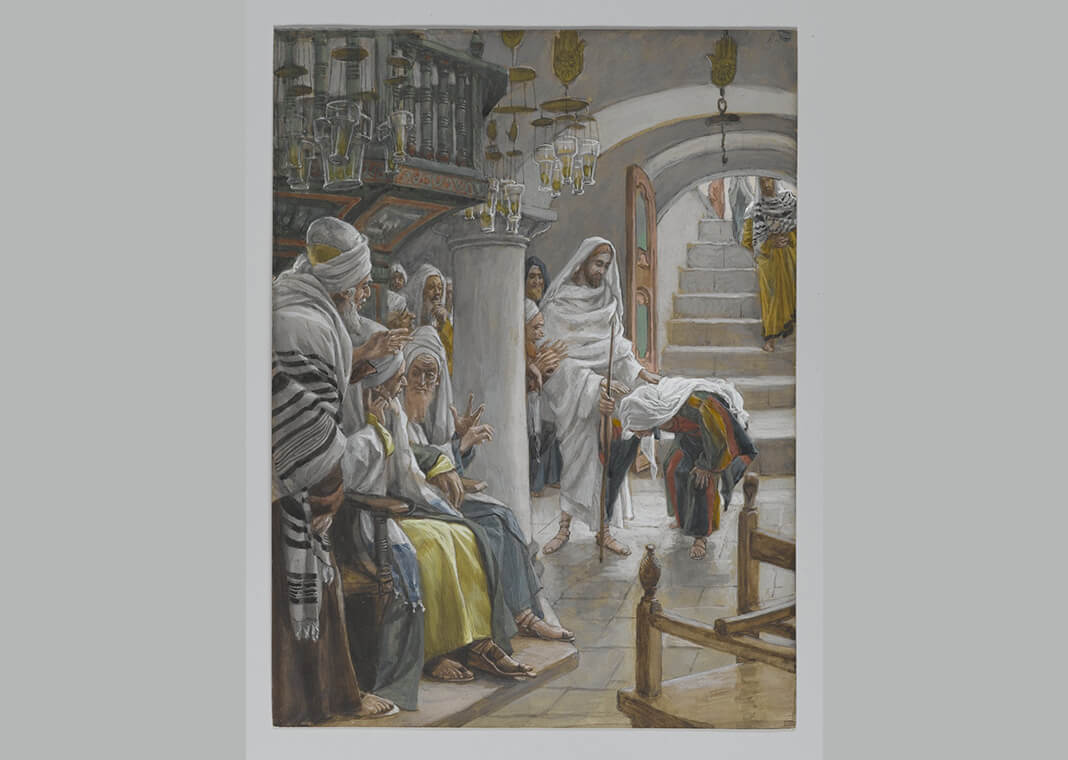
This story is inspired by Luke 13:10–17.
Eighteen years!
For 18 years, I lived crippled by a spinal problem. It began when I was a little girl and was painless at first, but over time, my spine began to ache and throb. As a child, I had many friends, but over the years, as I became more and more stooped over, their mothers wouldn’t let us get together. I heard the whispers; it was impossible not to hear them day after day. They said I was possessed.
My parents were good people, and as they got older, they worried about my future. At a certain point, I think even they became afraid of my twisted frame. And so, one day, they brought me to the synagogue. My new home was a spot next to the livestock—well, in truth, I sat next to the dung heap. The animal owners didn’t want me too close to the animals lest the demon in me jump into them. I felt worthless.
My world was small, and each day was a struggle. When I wasn’t begging, I was either at the market or washing my dress, which stunk of dung and burnt offerings. At the market, children would point and laugh. Their mothers shushed them while holding tightly to their hands, making sure no part of their bodies brushed up against even the hem of my dress, because the women didn’t want their children to become possessed too. No one ever spoke to me or made eye contact with me. This was the hardest part—harder than being stooped over, in pain, and without a home—because I remembered what it was like to smile and laugh and talk with my childhood friends. I was reminded of it each time they would avoid my gaze as they passed by me in their clean, fragrant garments with their beautiful little children. I was so completely alone and close to losing hope.
That was my life for 18 years. I lived like that until the day when everything changed.
It was the sabbath. The crowd was larger than normal because this man, Jesus, was there. I didn’t know anything about him but wanted to hear what he was saying. I figured it must be important if so many people had come to listen to him. I moved closer but didn’t dare get too close.
And then, Jesus called to me. Blood rushed to my head. Me? Is he calling me? Clearly, he must be talking to someone else.
“Woman, come,” he said again, beckoning to me. Amid loud murmurs, the crowd in front of me parted, leaving a wide open space. I slowly made my way forward until I was right in front of Jesus. My mind raced. What was happening?
He said, “Woman, you are set free of your infirmity.” And then, he bent over and laid his hands on my stooped shoulders. A shiver ran down my spine. The last time I had felt human touch was when my mother kissed my head the day she left me at the synagogue.
As the shiver ran down my spine, it felt like something that had been binding it very tightly was cut loose. Jesus removed his hands from my shoulders and, extending his right hand, took my hand in his and lifted up my hand so that my body would follow. Vertebrae by vertebrae, I could feel my spine painlessly popping into a new position. Suddenly, I was standing there completely upright, looking Jesus in the eyes.
I felt gratitude for the love in his eyes—those eyes that looked straight into mine and recognized me as a human being. Following this were tears of astonishment, wonder, and relief, along with the sadness and loneliness that had accumulated in me those 18 years. It all poured out at his feet.
“Thank you, Jesus! I love you. I praise you. I glorify you. I adore you, my God!”
As I left the synagogue that day, the crowds closed in on me. People stared in awe. My old friends embraced me as their children hung onto my robed ankles. I stood tall and strong. I had been given a completely new life, and I resolved in that moment to make it a song of gratitude.
Image via the Brooklyn Museum. James Tissot (French, 1836-1902). The Woman with an Infirmity of Eighteen Years (La femme malade depuis dix-huit ans), 1886-1896. Opaque watercolor over graphite on gray wove paper, Image: 9 1/2 x 7 1/8 in. (24.1 x 18.1 cm). Brooklyn Museum, Purchased by public subscription, 00.159.144 (Photo: Brooklyn Museum, 00.159.144_PS2.jpg).
